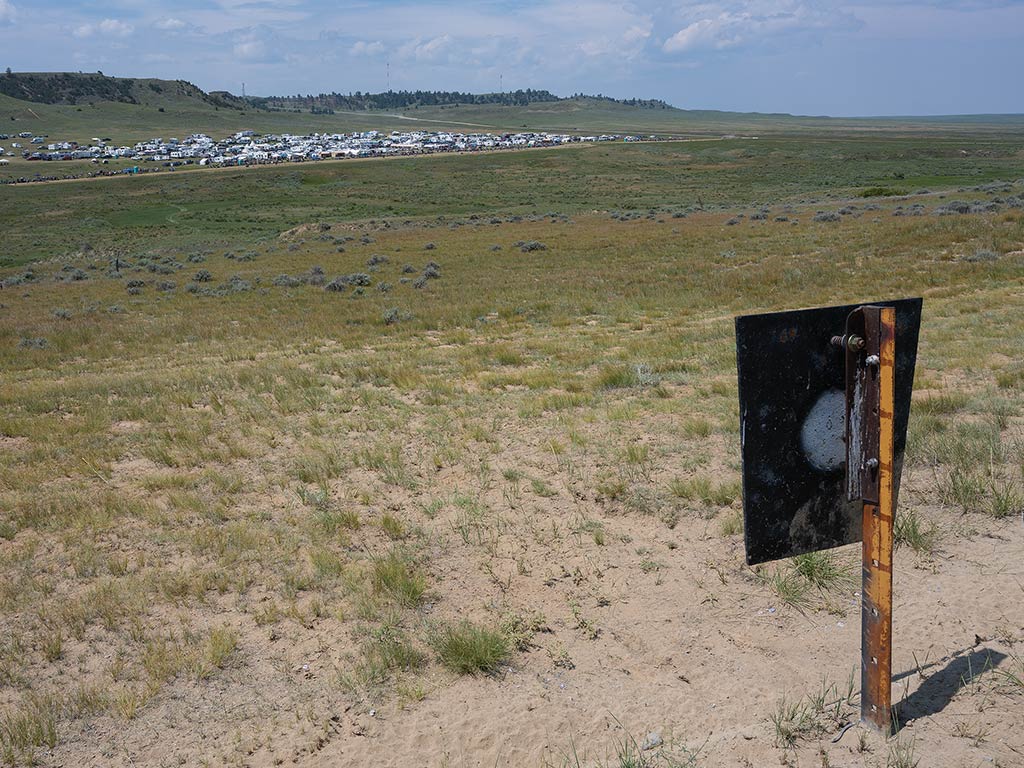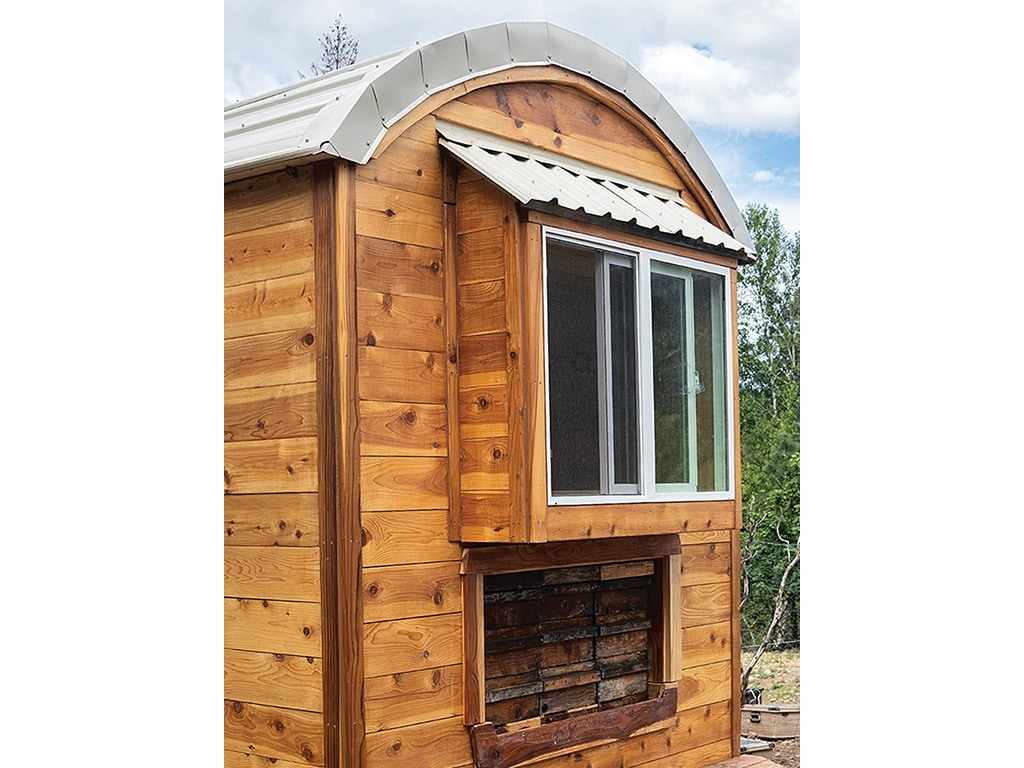Specialty/Niche, Sustainability December 01, 2023
Bee-ing Resilient
.
Oregon couple tunes into bee medicine, biodynamic bees.
After just a few minutes of conversation, it's not at all hard to imagine Eric and Joy McEwen rolling out their bedrolls to sleep next to their first beehive more than 20 years ago.
That awe and enthusiasm remain. Today, with three daughters and more than 600 hives, the McEwen family's 60-acre Diggin' Livin' Farm near Takilma, Oregon, is a bustling ecosystem where every decision reflects the McEwens' passion for pollinators and regenerative farming principles.
"We wanted to be a food producer, to produce a surplus, to help people by providing good, nourishing substance," says Eric. "It's always been a driving force in what we do."
As a young couple of recent college graduates setting their sights on farming, the McEwens dug deep into books by agriculture philosophers Wendell Berry and Gene Logsdon, permaculture pioneer Albert Howard, biodynamics innovator Rudolf Steiner, and others.
"Both living it and learning from some of the greats, we started to get that passion inside of us—not just for agriculture, but for the whole-systems approach towards organic agriculture," notes Joy.
"More than that, not only are we those kinds of farmers, we're actually those kinds of eaters as well," she adds.
When a friend gave them a hive of honeybees, the connection was almost instant. Here was a community, a system, a "hive bee-ing," as the McEwens call it. And the honey the bees produce is an almost magical food, loaded with antimicrobials, antioxidants, and flavor.
Above. Three-sided frames allow the McEwens' bees to build a brood comb with a curved edge, part of their natural hive approach to beekeeping. A large, dark drone stands out among workers. Good beekeeping is very hands-on.
Bee poop. Honeybees also fit perfectly into the McEwens' regenerative approach to the land. They set up hives on the edge of a bare, rocky patch of old mining spoils and watched as it transformed into a meadow.
"Honestly, one of the things that caught my attention right away was bee poop," says Joy with a smile. "The way we could build soil and be part of soil health and livestock production drew me towards wanting to be a professional agriculturist, and beekeeping was a combination of all of those things."
She's still fascinated.
"If I were to go back for a Ph.D., I'd study bee poop," Joy says.
Tough start. The McEwens got their start in beekeeping as the industry faced devastation from invasive varroa mites, increasingly lethal viruses, and a mysterious combination of threats called colony collapse disorder. Bees were dying by the billions, and beekeepers and entomologists struggled—and continue to struggle, two decades later—to find solutions.
At their first beekeepers' association meeting, the young couple caused "a ruckus," Joy recalls, when they told the group that they were pursuing an organic approach to beekeeping. Over the years, they have built their own hives from local, sustainably harvested wood; brushed them with a combination of linseed oil, pine rosin, and beeswax instead of paint; developed an organic treatment for varroa mites; and watched their hives closely for answers to their constant question: What do the bees want?
They've tried conventional tools over the years. They also decided that the strict rules imposed by organic certification aren't viable for their bees. Instead, they have walked a path based on biodynamic principles, which call for careful observation and a deep respect for the connections and rhythms of natural systems.
Instead, they have walked a path based on biodynamic principles, which call for careful observation and a deep respect for the connections and rhythms of natural systems.
They're quick to admit that it's been downright hard sometimes. To keep the business afloat, they direct market their honey as well as a diverse range of bee-related products.
Their wood shop is stacked high with hive boxes and frames to sell to other beekeepers. Eric is scaling up production of mite treatment in expectation of federal approval. Joy practices apitherapy, using honeybee stings to help patients with arthritis, inflammation, and allergies. They brew a fermented honey beverage called jun, mold beeswax candles, bottle propolis and oxymel extracts, and market their honey.
Most recently, the family completed construction of a hive hut, a cozy trailer with hives beneath its queen-sized bed. Bee air—rich with honey-scented aromatic compounds—is popular in Europe as a treatment for respiratory illnesses and sleep issues. Guests will be able to rent space in the "air bee 'n bee" for a couple of hours of treatment or a full night of sleep.
Above. Small hives made of cedar or redwood are light—perfect for the McEwens and their daughters to lift safely and comfortably. "It's not just about not hurting yourself, it's also about quality of life," says Eric. Eric and Joy share insights in Raising Resilient Bees. The bee-entry side of the hive hut.
New book. Decades after starting their farm with a stack of books, it seems only natural that the McEwens wrote a book of their own, Raising Resilient Bees.
The book, released by Chelsea Green Publishers, is both deeply technical and highly personal. It's a compelling read, a deep dive into the art and science of beekeeping and a love letter to bees, brimming with fascination and wonder.
It's also a step toward helping their Diggin' Livin' ecosystem extend into a new generation.
"We really wanted to leave something for our kids, a manual," says Joy. "And what we were doing is so special, we had to write it down."
The book is also a legacy.
"It's really wanting to inspire younger generations, not just our kids, to feel they can participate in growing their own food, which really brings about that sense of autonomy, of food sovereignty," says Joy. "That's what makes a healthy nation. If we can just inspire more people to be part of growing their own food, essentially we are going to have a happier society." ‡
Read More

RURAL LIVING, SPECIALTY/NICHE
A Long, Long Shot
The movie Quigley Down Under inspired a Montana rancher to start his own long-range shoot.

AGRICULTURE, LIVESTOCK/POULTRY
One Fleece at a Time
Single-fleece marketing puts a premium spin on fiber.






